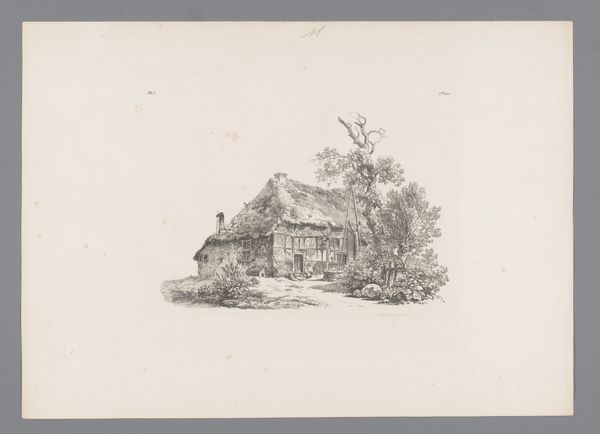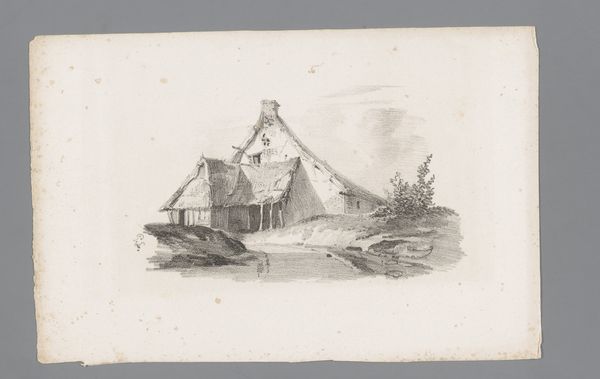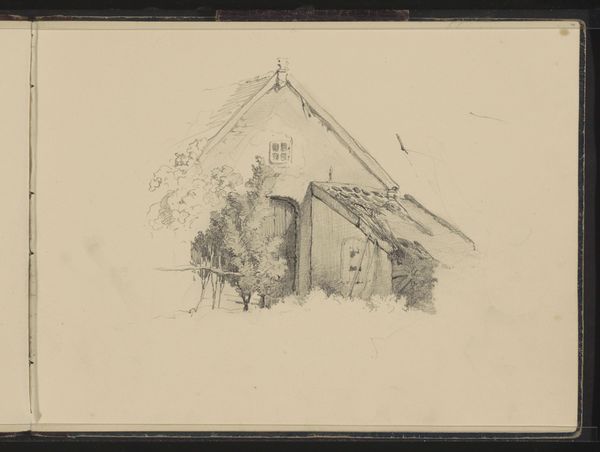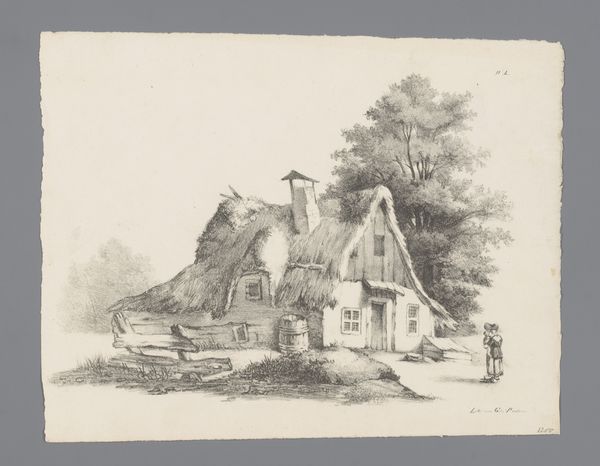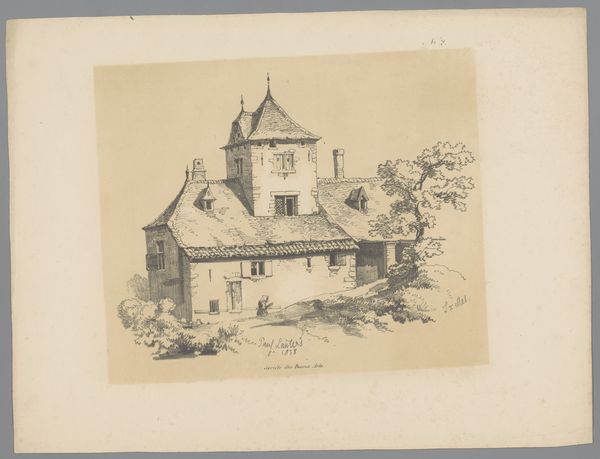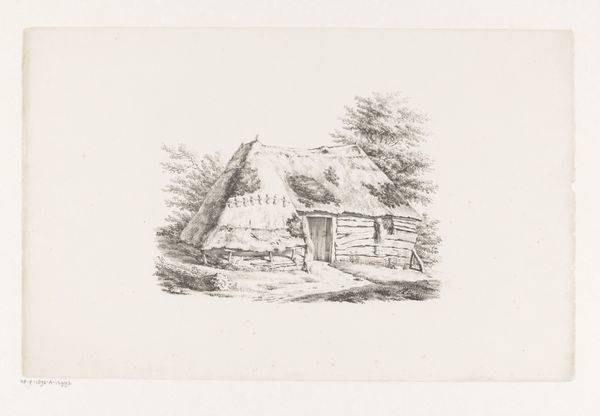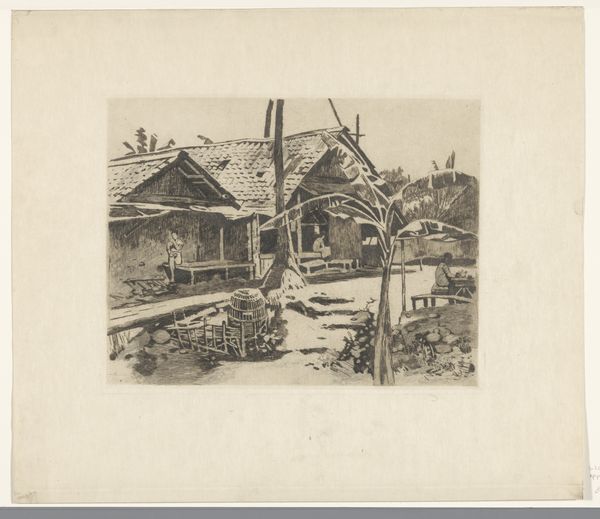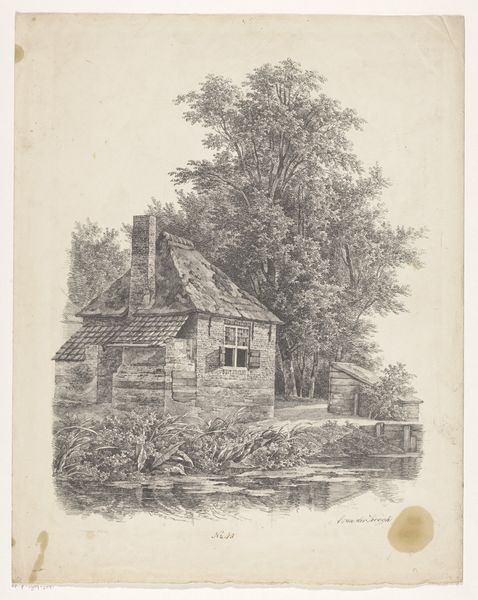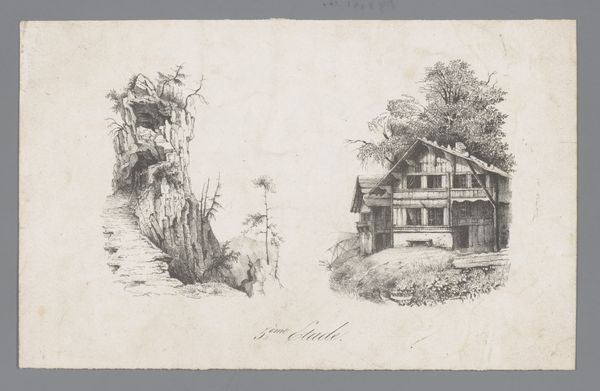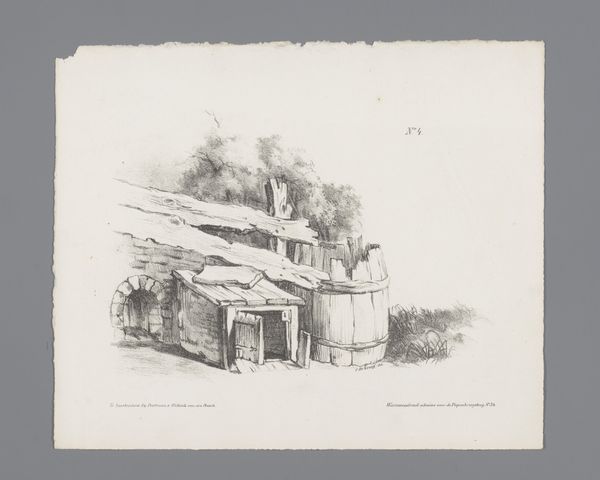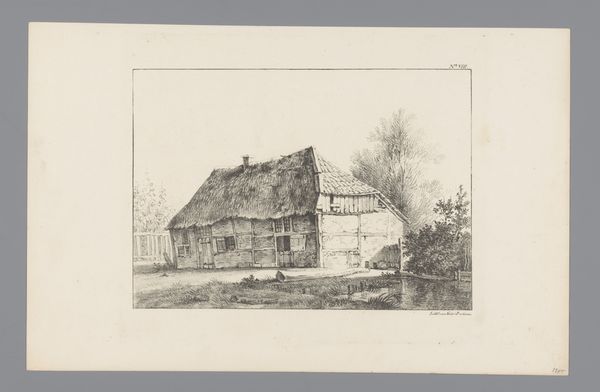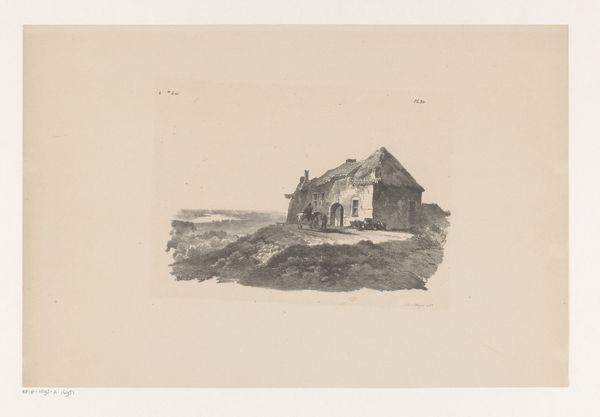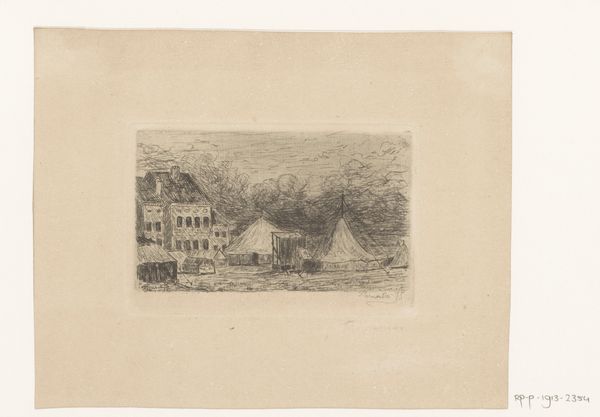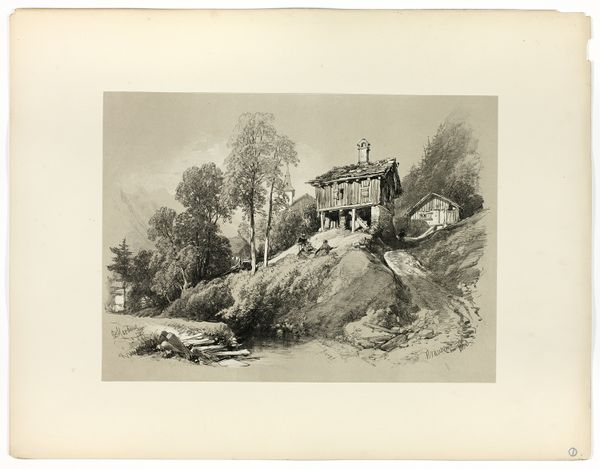
drawing, paper, pencil
#
drawing
#
landscape
#
paper
#
romanticism
#
pencil
#
realism
Dimensions: height 286 mm, width 415 mm
Copyright: Rijks Museum: Open Domain
Curator: Looking at this drawing by Matthias Parré, dated between 1821 and 1849, titled "Boerenwoning in een landschap," or "Farmhouse in a Landscape," my first impression is one of quiet dilapidation. The dwelling seems weathered, worn by time and the elements. Editor: Yes, it has a stark, almost melancholic quality, doesn't it? What’s particularly striking is the evident labor etched into every line. You see the rough-hewn logs, the thatched roof, the rudimentary fence—it all speaks of the hand-made, the direct relationship between human effort and the built environment. One can imagine Parré encountering such a building while exploring rural Dutch communities, a material reality very distant from urban production of art. Curator: Exactly. And the setting—the way it nestles almost organically into the landscape—demonstrates Romanticism's reverence for the rural and picturesque, very much a trope by the time Parré would have put pencil to paper. Editor: Note how the structure's decline, rather than being hidden or glossed over, is embraced as a characteristic feature. You might see some kind of romantic valorization of poverty as well, which would go hand in hand with that focus on the pure work and its primitive product. It certainly deviates from more celebratory views of labour! Curator: Perhaps, though the level of detail also speaks to a realist impulse, striving to accurately capture the textures and imperfections. And, think of how images like this might have been consumed: affordable prints bringing visions of rural life to urban audiences, shaping their perceptions of the countryside and its inhabitants. The farmhouse as a kind of emblem. Editor: True, images circulating like this create ideas about how the countryside can or should look, idealising simple labor while eliding other aspects of the lives of rural inhabitants. Also note the materials! This pencil drawing is made on paper, widely traded materials whose making has become less and less visible. Parré offers us an image that appears as if removed from the structures of capital even as it is thoroughly dependent on those very systems. Curator: Indeed, a powerful tension, making one consider how art both reflects and shapes our understanding of society and environment. Editor: Precisely. Examining the artwork through its materials really offers so much context!
Comments
No comments
Be the first to comment and join the conversation on the ultimate creative platform.
